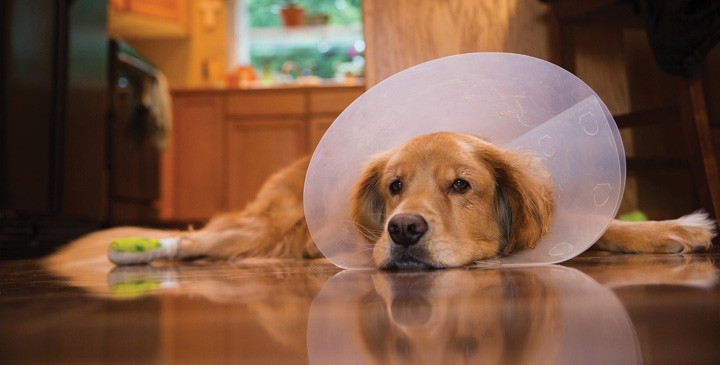Congratulations!! You’ve brought home a new puppy or kitten! This is a very exciting time for a family! So what next? Good quality food – check! Visit your veterinarian so your new fur-baby stays healthy – check! Toys, supplies, training – check! check! check! Now what about spaying and neutering? Preventing unwanted litters of puppies and kittens is a cardinal rule of pet ownership, and spaying and neutering is the best way to do that. However, recently there are a lot of different opinions on the best age to perform these major surgeries, which techniques to use, and potential for long-term health problems.
When I went to veterinary school we were taught that pets should have their spay or neuter surgery performed at 6 months old; this would help control the pet population and there were no negative health consequences. That was over fifteen years ago and since that time most veterinarians, including myself, have performed these surgeries on pets much younger, and much older than 6 months old. So is the recommendation changing? Maybe. . . . at the time, this recommendation was based on some facts and some assumptions, but things in science and medicine are changing all the time.
What we knew then:
1. A spay is a major abdominal surgery performed on female pets to remove the entire uterus and ovaries. It prevents unwanted pregnancies and heat cycles. Neutering is also major surgery, performed on male pets that removes the testicles, preventing unwanted pregnancies.
2. These surgeries remove almost all the sex hormones from the pet (estrogen in the girl pets and testosterone in the boys).
3. Many serious and life threatening diseases can be prevented by removing reproductive organs and sex hormones, including uterine and prostate infections, mammary (breast) cancer, testicular cancer, and hernias.
4. Some undesirable pet behavior (urine marking, mounting, vocalizing)associated with breeding can be prevented when puppies/kittens are spayed and neutered.
5. By 6 months old, most puppies and kittens are entering puberty – they are still growing, but have the potential to be fertile.
6. By 6 months old, puppies and kittens have matured enough to tolerate anesthesia as safely as an adult animal.
So, 6 months old for spay and neuter surgery became the best recommendation with the information we had. Now we have newer, more complicated information, newer drugs, and improved surgery techniques. When making decisions about spay and neuter, pet owners and veterinarians have more sophisticated goals than just prevention of unwanted pregnancy and survival of surgery. 6 months old is still a good recommendation, but probably simplistic, and may not address the unique needs of all breeds, genders, and life situations of pets. So what has changed?
1. We now know removing the source of sex hormones from growing puppies and kittens can have an effect on the way they grow.
2. Removing the sex hormones may contribute to development of some diseases later in life in pets already at risk for these problems, including obesity, joint disease, and urinary incontinence.
3. Most of the published medical research available on the long-term effects of early spay and neuter is outdated and flawed. The findings from studies that just focus on one breed or one disease cannot be applied to all breeds or diseases. There is a lot bad information available to pet owners based on misinterpretation or over interpretation of the available research, or biased personal opinions.
4. New anesthetic drugs are safer and very low risk for pediatrics, making anesthetic procedures on pets less than 6 months old much safer than before, if used properly and monitored carefully by licensed veterinary medical professionals.
5. Many pet rescue groups need early (8-12 week sold) spay and neuter programs to be able function properly, as it is not feasible or in the pet’s best interest to be held in a shelter until they are 6 months old or older before they can be adopted.
6. Veterinarians need to consider the pets’ breed, gender, health risk factors, and lifestyle when making a recommendation on the best age to perform spay and neuter.
As a new vet, I thought I was doing a great job by spaying or neutering every puppy and kitten at 6 months. But now I’m performing (safely and successfully) these surgeries on pets from rescue groups at 8 weeks old, so they get into their forever home sooner and the rescue has room to take in more pets in need, while at the same time discussing delaying these surgeries in patients from homes with very low risk for unwanted pregnancy.
As a general rule I still recommend 6 months old as an appropriate age for cats and small dogs. They finish their skeletal development well before 1 year of age, much earlier than large and giant breed dogs, so removing the sex hormones has minimal effect on their growth and development. Also, with cats in particular, there are huge behavioral benefits to spaying and neutering before puberty. Just ask anyone who has ever had a cat in heat!! With large breed (60+ pounds at maturity) female dogs, I generally still recommend spaying at 6 months as the risk of breast cancer and unwanted pregnancy outweighs the potential benefit of waiting until after they have gone through a heat cycle. Also performing a spay on a large mature dog is a much more complicated surgery, and has potential to be riskier than with a puppy. It’s large breed male dogs that I really think may benefit the most from delaying the neuter surgery until they are a few months older – 12-14 months. It’s important to discuss this decision with
your veterinarian, so the lifestyle and health factors for YOUR dog can be accounted for. Don’t be surprised if different veterinarians have different opinions, or our opinions change over the next couple years. That just means that your veterinarian is continuing to look for the best solutions for your pet’s health!



